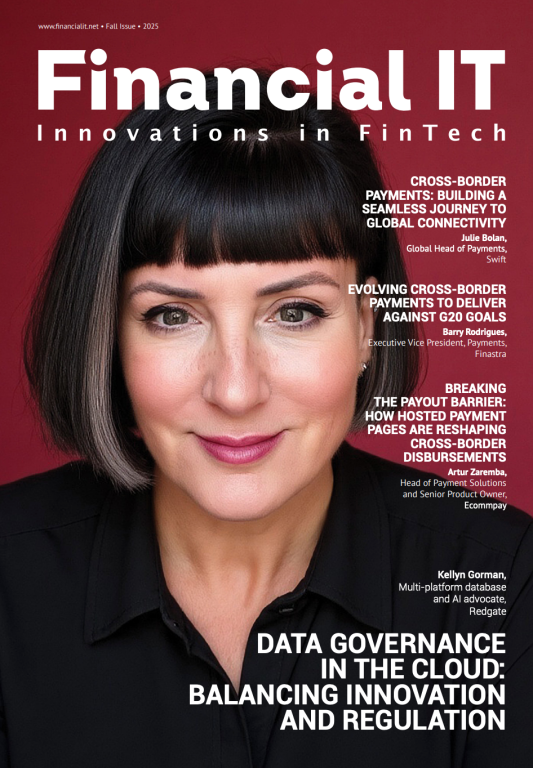Biometrics will eliminate friction in financial services

- Alexander Dunaev , Co-founder at ID Finance
- 06.09.2018 09:00 am undisclosed
Biometrics boom
No longer the preserve of the military and secret service, biometrics is one of the hottest and fastest growing sectors in the world. With the technology used across a variety of sectors - banking and finance, retail, healthcare and government - and with cybercrime on the rise, it’s little wonder experts predict the biometrics market will be worth $50bn by 2024.
Biometrics identifies individuals through unique physical characteristics such as facial recognition, fingerprint and iris verification, as well as via behavioural patterns including voice ID, how we walk and use a keyboard and mouse. The technology is providing a convenient, secure and accessible means of identity verification. And as one of the strongest forms of authentication it is gradually doing away with ID cards, passwords and in-person and paper-based proof of ID processes.
Biometrics is particularly prevalent in areas where identity verification is critical. Such applications range from palm vein scanners by Banco Bradesco to reduce Brazilian ATM fraud, voice ID and facial recognition from HSBC, to ‘selfie pay’ from MasterCard and a virtual aquarium tunnel with 80 in-built cameras developed by Dubai International Airport to identify travellers in motion and combat long security queues.
A fast, frictionless and secure customer experience
In today’s hyper connected world, consumers increasingly expect a seamless, secure and hassle-free experience founded on trust and speed. Biometrics is addressing this demand, making our lives easier and transforming the customer experience by speeding up and simplifying the consumer authentication process. As well as fighting fraud it is minimising the need for passwords and removing the burden of having to regularly reset passwords and PINs to protect our accounts.
The behavioural stream of biometrics also holds increasing appeal. As the technology is passive in nature it has no impact on the user experience. The technology is also able to thwart fraudsters with the ability to circumvent more conventional means of authentication – passwords, PINs, device IDs and to some extent traditional physical biometrics – as it provides continuous authentication throughout the user’s journey not just at the point of login.
Furthermore, when behavioural biometrics is coupled with machine learning, the technology is able to offer an even stronger means of authentication. The processing of extremely large data sets becomes possible recording hundreds if not thousands of behavioural patterns in order to continuously authenticate users. In the case of type recognition for instance these parameters could include typing speed, typos, flight time between keys, keystroke depressions, as well as changes in patterns ofbehaviour over time.
Biometrics and the next wave of financial inclusion
Around 1.7bn people are unbanked according to the World Bank, down from 2.5bn in 2011. Considerable progress has been made in just six years with innovations in fintech taking much of the credit for moving almost a billion people into the financial system. However, 50 percent of adults globally remain excluded from financial services with a large proportion lacking the necessary ID documentation to gain access.
With identity at the core of increasing financial inclusion, fintechs and financial institutions are wising up to the potential biometrics can have on improving identity capabilities. While mass-market adoption of smartphones has played a significant part in providing access to the financial system in emerging markets, biometrics is leading the next wave of financial inclusion in these regions and is already making its mark among the unbanked populations.
The most remarkable example is Aadhaar – an extraordinary undertaking by the Indian government to get the country’s entire 1.25bn population onto a single biometric card system embracing 1600 languages and almost 300 million illiterate adults. Today 99% of India’s adult population is covered on Aadhaar and the system is working towards narrowing the gender and economic class gaps through granting its citizens access to financial services across the country.
Potential pitfalls
As with all emerging technologies, biometrics is not fool-proof with numerous risks associated with incorporating the technology. While the average consumer can recover from a stolen password or PIN it is less clear how one recovers from a compromised biometric. Similarly, the ramifications of any security breach involving biometric information is likely to be far more serious.
Amazon’s facial recognition system recently came under fire for wrongly identifying 28 members of congress as arrestees and disproportionately misidentifying people of colour. A senior Google executive also admitted the technology has inherent biases and doesn’t have the diversity it needs. Meanwhile the UK has broken its own laws over facial recognition and fingerprint technology and is currently struggling to develop legislation covering the use and oversight of biometrics.
Like many emerging technologies, the development and deployment of biometrics is well ahead of regulation and legislation. With our online and digital behaviours changing constantly a framework which keeps pace with these behaviours is necessary in order to be effective and fit for purpose. There is also a role for those incorporating the technology to educate consumers and to manage privacy and security concerns relating to how biometric data is stored, used and secured.
A new normal?
While still a nascent technology and in spite of security concerns, biometrics continues to pervade mainstream consumer services reshaping our digital behaviours and interactions and gradually becoming part of our day to day lives. Industries beyond security and financial services are also grappling with the technology as they discover its capability to enhance customer service and its future potential to deliver unparalleled levels of personalisation.
The recent spate of data breaches however has amplified awareness and sensitivity around data security and stewardship. Consumers are becoming more selective about the companies they choose to do business with and with whom to entrust their personal information to. And for now, it is those businesses adopting biometric authentication as a security measure who will have the edge over the competition in terms of customer experience, trust and speed.





















